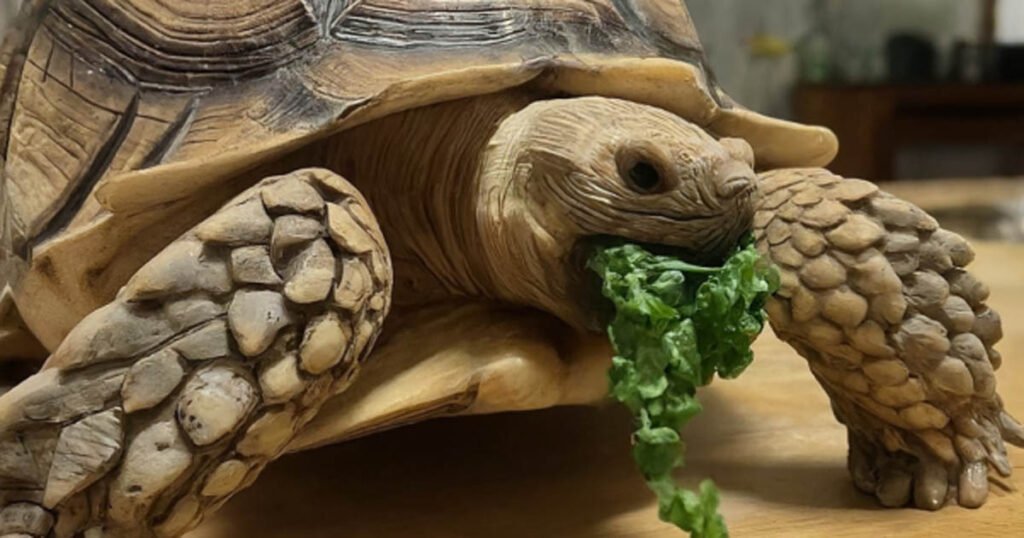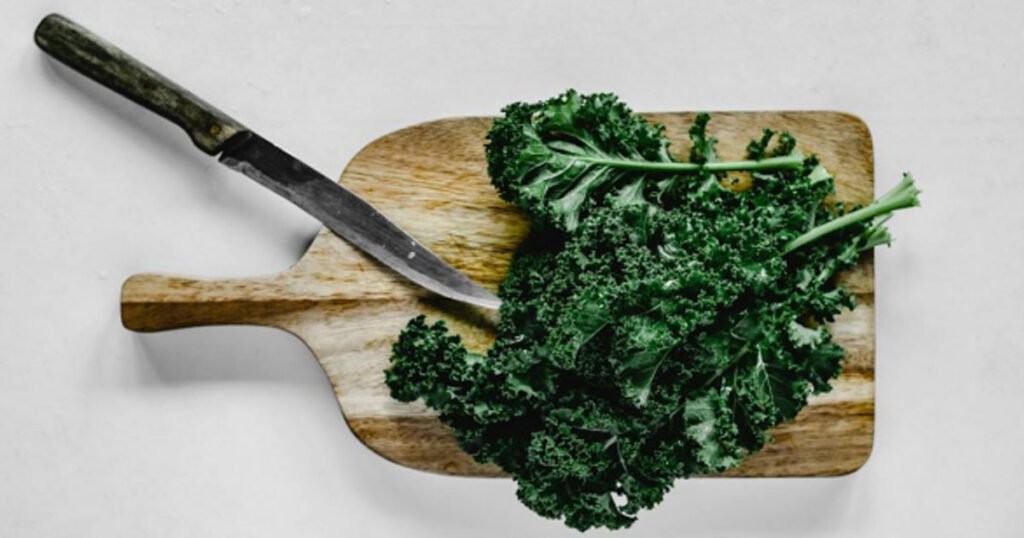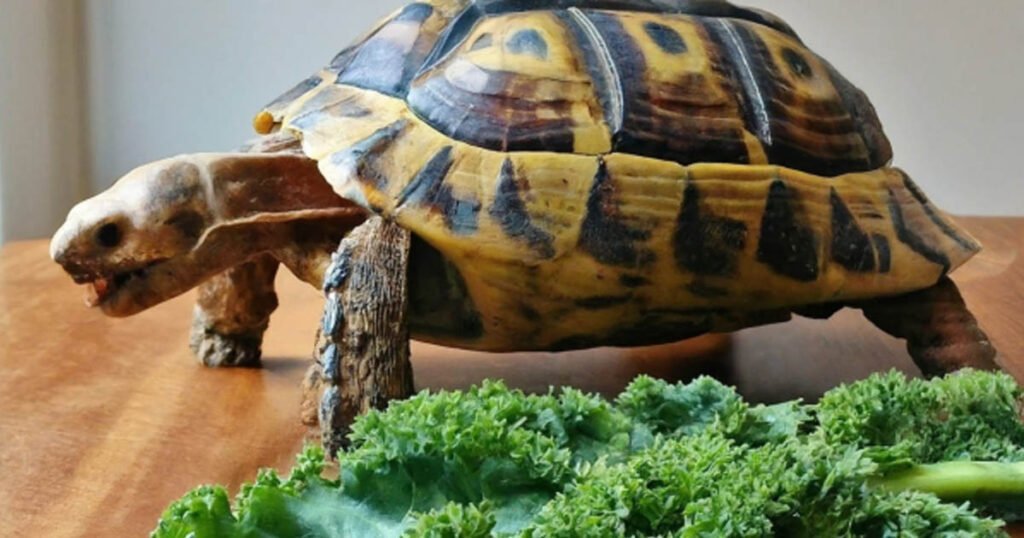Are you curious about what green leafy can provide for your turtle’s diet? One question that often pops up is, “Can turtles eat kale?” Wild turtles can survive for themselves. As responsible pet owners, understanding their dietary needs is essential. Commonly, you may know that greens and plant-based foods are naturally safe for turtles.
Adding Kale to your turtle’s diet may seem like a healthy option, but you need to know how to do it right. Kale can indeed be a nutritious addition, but you cannot rely on it as a staple. In this article, we’ll explore “Can turtles eat kale?” the benefits, risks, and the ideal turtle diet, ensuring you make informed choices for your shelled companion. Can turtles eat kale? Let’s find out!
Table of Contents
Can Turtles Eat Kale?

Yes! Turtles can enjoy kale as a safe diet. This leafy green, part of the cabbage family, is healthy and packed with essential nutrients. Originating from Asia Minor, kale boasts a rich history that traveled across Europe with the Romans.
Its dark green, ruffled leaves distinguish it. Turtles can benefit from the antioxidants and vitamins in kale just like humans. When easily digestible, kale contributes significantly to your pet’s health. However, a moderate serving is important, as excessive consumption may pose risks.
Let’s look at why kale is good for turtles and how to give them a balanced, nutritious diet.
Kale: A Nutrient-Rich Addition For Turtles

There are a lot of nutritional advantages of Kale:
Antioxidant Boost
Kale’s remarkable feature lies in its antioxidant-rich composition, creating a shield of health benefits for turtles. Antioxidants play a crucial role in neutralizing harmful molecules known as free radicals within the body. For turtles, this translates into a defense mechanism against oxidative stress.
Oxidative stress, caused by an imbalance between free radicals and antioxidants, can impact turtle well-being. The immune system, metabolism, and cellular health can all be affected by oxidative damage. Your turtle’s immune system will be boosted by kale, a potent antioxidant that helps combat oxidative stress.
Fiber-Rich Diet
Kale fiber adds volume to the turtle’s gut, facilitating regular bowel movements. This is essential for maintaining a healthy digestive system and preventing constipation, which can be a common concern for pet turtles.
Fiber acts as a prebiotic, promoting beneficial gut bacteria for turtles. A balanced gut microbiota improves digestion, nutrient absorption, and overall immune function.
Anti-inflammatory Properties
Inflammation is a part of the body’s defense mechanism, but chronic inflammation can be detrimental. Chronic inflammation can compromise the immune system. Kale contains anti-inflammatory compounds, reducing inflammation in various tissues and organs.
This is particularly relevant for turtles as it can support overall immune function. Kale is an anti-inflammatory food that helps support the immune system in turtles.
Support for Bone Health
Kale possesses a favorable calcium-to-phosphorus ratio, approximately 3:1. This balance is vital for turtles as it prevents calcium deficiency issues. Calcium is a primary building block for a turtle’s shell. It provides the necessary strength and structure, ensuring that the shell is hard and resilient. Adequate calcium is essential for the proper development and maintenance of a turtle’s skeletal structure, including its shell.
Baby turtles, in particular, require substantial amounts of calcium for proper shell development. Kale, being rich in this essential mineral, makes an excellent dietary choice for young turtles’ healthy growth.
Vitamin K Source
Vitamin K in kale supports your turtle’s overall health, particularly blood clotting. Blood clotting is a complex biological mechanism that prevents excessive bleeding and promotes injury healing. Vitamin K contributes to the synthesis of proteins like prothrombin, which are necessary for blood clot formation.
This essential vitamin is vital for the synthesis of proteins involved in the coagulation process. This ensures that your turtle can effectively respond to injuries or wounds.
Low-Calorie Advantage
Kale’s low-calorie nature makes it an excellent choice. Unlike sugary foods that require moderation, turtles can indulge in kale without risking obesity or health issues. The low-calorie aspect ensures a balanced diet, contributing to your turtle’s long-term well-being.
Kale’s nutrition profile also includes beta-carotene and vitamin C. These elements provide vital vitamins and minerals, promoting overall turtle health.
Different Varieties Of Kale Contain Different Nutrition
Different varieties of kale contain varying amounts of oxalate. For instance,
- Curly kale ranges between 700-1000 mg/100g, while
- Dinosaur Kale measures higher at 1020-1100 mg/100g
- Red Russian Kale has a concentration of 760–800 mg/100g.
Is There Any Risks Of Excessive Kale Eating For Turtles?

While kale is a nutritious addition to a turtle’s diet, it’s essential to be mindful that you can not include this in your turtle’s regular meal.
Oxalates in Kale
While kale is a nutritious addition to a turtle’s diet, it’s essential to be mindful of its oxalate content. Oxalates, present in various vegetables, including kale, can bind with calcium in a turtle’s body, making it harder for it to absorb. Although kale’s oxalate levels are relatively low, excessive consumption may pose a risk.
Monitoring your turtle’s kale intake is crucial to prevent digestive problems. Turtles have a limited tolerance for oxalates, and prolonged exposure can lead to health issues.
Goitrogens in Kale
As a member of the Brassica plant family, kale contains goitrogens. The compounds can enlarge a turtle’s thyroid gland and affect its metabolism if consumed too much. Even though goitrogens aren’t bad, eating kale in moderation is important.
How Much Kale You Should Serve To Turtles?
While kale offers numerous health benefits, moderation is crucial to avoid potential issues. Feeding your turtle too much kale in a single sitting can lead to nutrient deficiencies and digestive problems. It’s essential to balance their diet.
For younger turtles: Young turtles, being in their growth phase, should be offered a limited amount of kale – the equivalent of a small leaf or two per week. This ensures they receive nutritional benefits without dominating their diet.
For adults, turtles: Adult turtles can enjoy a slightly larger serving of kale, up to two or three times more than their younger counterparts. However, kale shouldn’t become the primary component of their diet.
Feeding preferences: Turtles generally love kale, and you can offer them as much as they can consume without risking their health. However, relying exclusively on kale may deprive them of a diverse and balanced diet essential for their well-being.
If your turtle has pre-existing health conditions or encounters difficulty digesting kale, seeking advice from a veterinarian is prudent. A vet can provide personalized guidance on the ideal amount of kale, if any, for your turtle’s specific health needs.
How To Safely Prepare Kale For Turtles
- Before feeding your turtle, wash kale thoroughly to remove chemicals and pesticides.
- You can chop kale into small, manageable pieces for turtle consumption. However, chopping is not necessary – they can eat kale with the whole leaf.
- Mix kale with other vegetables and fruits, keeping it below 50% of the overall diet.
- Be cautious, as some turtles may not like or digest kale.
- If negative reactions occur, cease feeding kale and consult a veterinarian for guidance.
FAQ
Can box turtles eat kale?
Absolutely! Box turtles can indeed enjoy kale. Packed with calcium, kale promotes strong bones for your box turtle. The fiber in kale aids digestion, leaving your shelled friend feeling satisfied while minimizing obesity risk. Box turtles love kale, making it a fantastic and nutritious treat for them.
Can painted turtles eat kale?
Yes, Painted turtles can savor a delightful meal of kale. Whether it’s red or curly kale, they’re in for a treat. Before serving remove the stems (as painted turtles aren’t fans). This nutritious and tasty treat will be a hit with your painted turtles!
Can aquatic turtles eat kale?
There’s no doubt that turtles enjoy kale. Whether they’re red-eared sliders, painted turtles, or any other species, kale is a fantastic addition to their diet. Fortunately, kale’s oxalic content doesn’t pose a risk to your aquatic turtles, so it is a good choice.
Can baby turtles eat kale?
Baby turtles eat kale. But it is good if you offer them occasionally and in small portions. Their diet, especially during the early stages, should be diverse to ensure they get a balanced mix of essential nutrients.
Read More: Can Turtles Eat Carrots
Conclusion
To sum it up, the answer to “Can Turtles Eat Kale?” is yes, with a few crucial considerations. While kale brings valuable health perks, such as antioxidants and bone support, it should not be included as a staple. Otherwise, you are safe to feed kale without too much risk.
Keep in mind that each turtle is unique, and their preferences may differ. Keep an eye on your turtle’s reaction to kale and seek vet advice if necessary to keep your reptilian friend happy and healthy. So, yes, turtles can certainly enjoy kale, but, as with all things, it’s best served in balance for a wholesome and nutritious turtle diet.
